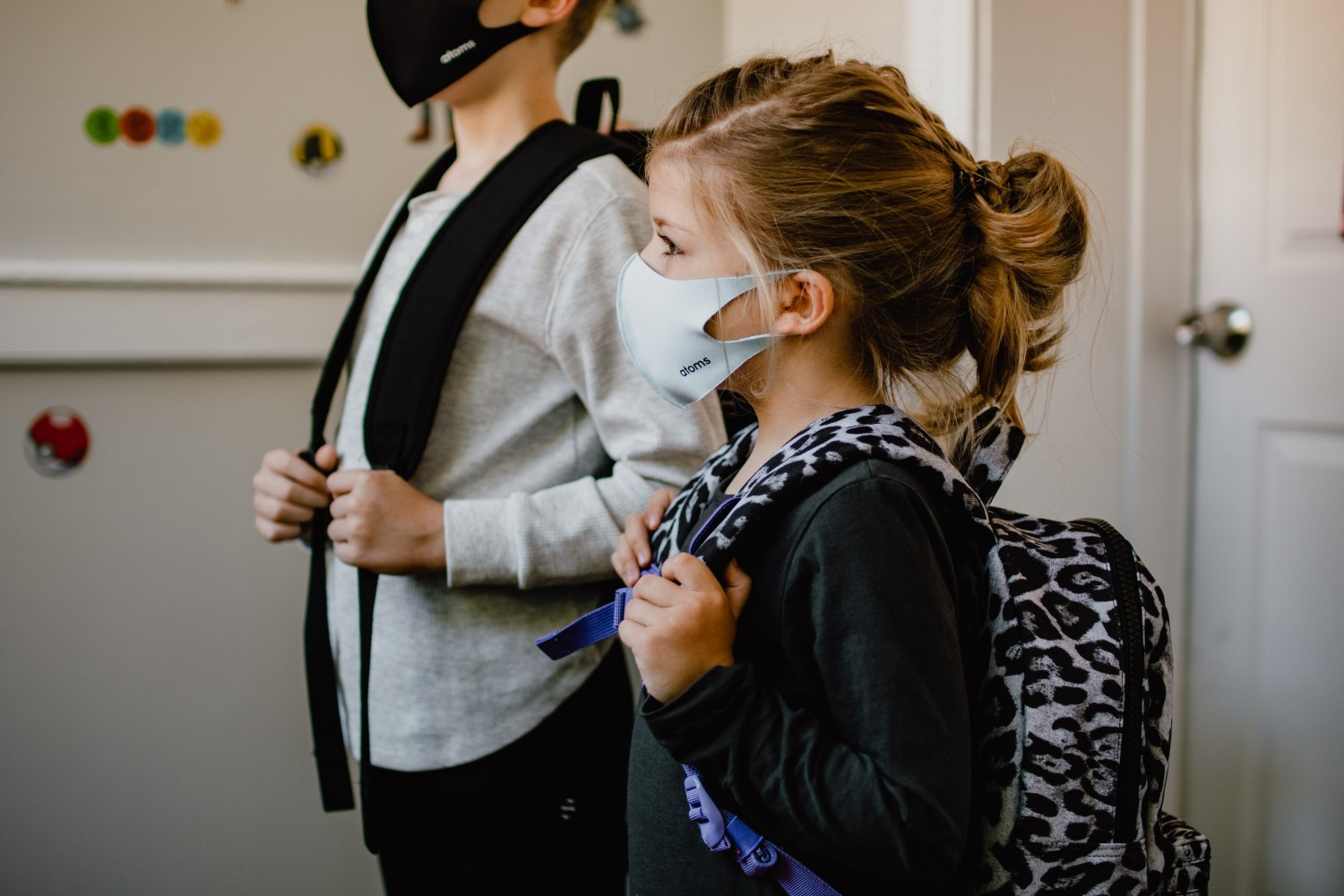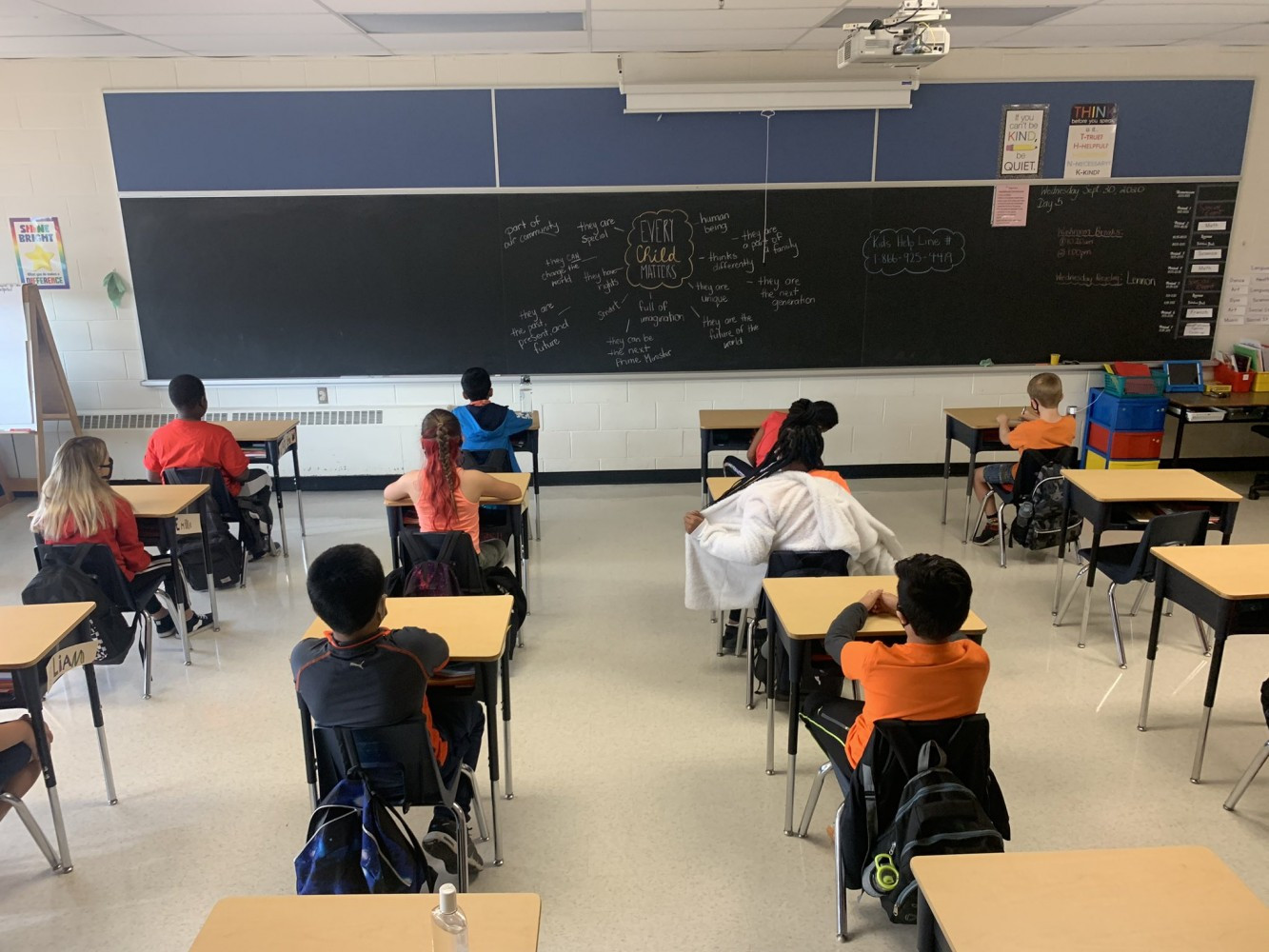
Peel COVID cases remain low but recent uptick raises concern as school returns
During the COVID-19 pandemic, the Region of Peel was overrepresented in cases across the province. In September 2020, The Pointer reported Brampton and Mississauga accounted for 25 percent of Ontario’s reported cases and 40 percent of the 116 schools reporting COVID-19 infections at the time, while only ten percent of the province’s population lived in the region.
Three years later, many COVID-19 restrictions and regulations in public spaces, such as mask mandates and physical distancing requirements, have long been rolled back. However, cases in hospitals and data from wastewater systems indicate the virus is still circulating, and health professionals continue to track the mutations of the disease, with a new variant of concern coming to light in recent weeks.
A recent uptick in cases — while overall numbers are still low compared to much of the pandemic — has raised concerns of a possible early fall wave of COVID-19 coinciding with the return to school for many students and educators. On August 9, the World Health Organization published an Initial Risk Evaluation of the most recent COVID-19 variant of concern, EG.5, an Omicron subvariant.
It highlighted in its evaluation that the reported cases globally indicate an uptick, and despite determining the subvariant as “low” risk in the evaluation, said there is a risk of global transmission that could contribute to a surge in cases. “Several countries with rising EG.5 prevalence have seen increases in cases and hospitalizations, although at present there is no evidence of an increase in disease severity directly associated with EG.5,” the evaluation reads.
While the WHO says there currently is no evidence of more severity in this particular subvariant, there is risk around its transmissibility, especially regarding its immune escape properties. “EG.5 may cause a rise in case incidence and become dominant in some countries or even globally,” according to the organization.
The Johns Hopkins Bloomberg School of Public Health reports cases of the EG.5 subvariant have increased recently in the U.S., making it the “most prevalent variant in the U.S.—accounting for more than 17 percent of cases,” although it still represents a low number of total recorded cases. In Canada, the EG.5 has been “steadily increasing in national samples since early July, following sporadic detections in the months prior,” according to data from the Government of Canada.
Data from the federal wastewater surveillance dashboard shows 10 out of the 27 regions under wastewater surveillance have seen an increase in COVID-19 levels.
In an email, the PDSB told The Pointer that, “for the 2023-2024 school year, the Peel District School Board will continue to follow the guidance and directions of Ontario’s Chief Medical Officer of Health and Peel Public Health regarding COVID-19, other respiratory viruses circulating in the community, and cold and flu season.”

With the emergence of a new variant of concern, the return to school in early September could create the conditions for an early fall wave of COVID cases.
(PDSB)
“The Peel District School Board is committed to providing safe learning and working environments for our students and staff this coming school year. The safety of our students and staff is our highest priority,” the board spokesperson said.
In a letter to families of students attending PDSB schools in September of 2022, Peel Public Health listed recommendations to support their role in helping schools provide “safe learning environments for students and staff.” It encourages families to get up to date with all student immunizations, including COVID-19 vaccines for children aged 6 months to 5 years, and boosters for youth aged 5 to 18 years.
The letter directs families to the provincial School and Child Care Screening Tool, which tells them to stay home if they are sick and says to review the new provincial guidance on returning to school after developing COVID-19 symptoms or testing positive. The letter also tells families to have students wear a mask but only if they are at higher risk of severe illness; ended isolation after COVID-19/symptoms or for 10 days after symptoms started; for 10 days after their last exposure to someone with COVID-19 or COVID-19 symptoms; and “when it is right for you.”
The Pointer spoke with Peel Public Health in an email about the uptick in cases and the recent variant of concern, and asked what current plans are in place to address any potential risks of COVID-19 transmission in fall. Dr. Rebecca Shalansky, Peel Region’s Associate Medical Officer of Health, told The Pointer that Peel Public Health is, “aware of new variants of concern and… continues to make use of the tools we have available for monitoring and responding to all respiratory illness activity, including COVID-19, regardless of the variant.”
Shalansky highlighted that while COVID-19 activity in Peel remains low at this time, fall surges of COVID-19, influenza and RSV “are expected.”
“Peel residents are encouraged to follow provincial guidance applicable to all respiratory illnesses, including staying up to date with vaccinations, staying home when ill, and washing hands,” she wrote. “NACI’s recently updated guidance directs individuals aged 5+ to consider delaying a COVID-19 booster until the fall for optimum protection.”
Dr. Shalansky wrote that routine school immunizations will continue to be promoted to eligible individuals over the summer months. “We have a great deal of confidence that our school board partners are well equipped to handle the upcoming respiratory illness season, and our close working relationship with Peel school boards allows us and the boards to adjust quickly as required.”
A Public Health Ontario report revised in April this year, titled Heating, Ventilation and Air Conditioning (HVAC) Systems in Buildings and COVID-19, found that indoor settings “pose an elevated risk of COVID-19 infection,” and that “improper or insufficient ventilation” has frequently been reported as a risk factor in outbreak investigations.
“As part of a multi-layered strategy following public health guidelines, enhancing outdoor air ventilation and/or enhancing filtration where possible, and a well-functioning HVAC system can complement other public health measures by removing and diluting virus from indoor air, thereby lowering exposure to COVID-19,” it says.
The report further highlights that filtration and ventilation are “important components in an indoor air quality improvement strategy to exhaust or capture gases, vapours and airborne particles including virus-containing dust and aerosols,” and says the removal of these matter can reduce exposure to occupants of the indoor spaces. It also shares that there are "case reports of unfiltered, recirculated air in a space linked to COVID-19 transmission in indoor settings with low or inadequate ventilation.”
The Pointer spoke with Mary Jo Nabuurs, Officer of Media Relations and Outreach at Ontario School Safety (OSS), a volunteer-led organization which has been advocating for clean indoor air conditions in Ontario schools for the past year. Nabuurs told The Pointer that members of their organization, especially those who have children returning to school across Ontario, are “really, really anxious” about air quality conditions in Ontario schools.
“The impact of wildfire smoke on children is even worse and this has to do with the size of their airways,” said Nabuurs, highlighting that these additional impacts on the outdoor environment are impacting indoor environments and causing greater concern for their community members. She shared how exposure to wildfire smoke can increase people’s susceptibility to respiratory infections or viruses like COVID-19, which enters through the respiratory system.
The CDC shares that wildfire smoke can “irritate your lungs, cause inflammation, affect your immune system, and make you more prone to lung infections, including SARS-CoV-2, the virus that causes COVID-19,” as written on the organization's website.
“We have legitimate concerns that this fall/winter may be worse than what we experienced last fall/winter,” said Nabuurs.
“If we expect clean drinking water, we should be able to expect clean air, especially with the knowledge we have that it matters,” said Nabuurs. OSS is focused on air quality in schools for many reasons, Nabuurs shared, highlighting the adverse effects of the wildfire smoke that had caused Ontario to receive Air Quality Alerts and the importance of addressing this, along with disease transmission, through the kind of air quality improvements in schools the organization is advocating for.
On its website, the PDSB outlines ventilation efforts made by the Board in June 2020 to improve indoor air quality as a means to combat COVID-19 transmission. “The Board initiated and is continuing to undertake steps to improve the air quality, filtration and operation of HVAC and heating and ventilation systems in PDSB schools and other facilities,” it reads. “Working closely with the Ministry of Education, and utilizing all available Provincial and Federal funding provided, Facilities and Maintenance staff have been implementing several effective strategies to help reduce the spread of COVID-19.”
The website provides a list of these strategies, including efforts to “adjust HVAC system settings to increase the amount of fresh air into the building,” as well as providing standalone HEPA filter units “for schools or parts of schools with full mechanical ventilation.” However, not all classrooms in Peel, or even Ontario, have air conditioning systems.
The Pointer asked the PDSB if it is currently maintaining or building upon its efforts to implement its ventilation strategies to help reduce the spread of COVID-19 during the upcoming academic year. They responded saying they will, “continue to implement COVID-19 prevention and mitigation strategies that follow direction and guidance from the Ministry of Health and Peel Public Health to ensure that students and staff are safe.”
Regarding ventilation, the PDSB responded that, when possible, its schools will continue to implement its existing strategies such as keeping windows open to encourage natural ventilation and adjust HVAC systems to increase fresh air flow. They also said they would continue with using HEPA filters, when possible, among other strategies.
A Public Health Ontario report revised in July of 2022 notes that, “the use of a portable air cleaner is one component of a multi-layered strategy to mitigate SARS-CoV-2 transmission and is not a substitute for other public health measures, e.g., physical distancing, masking.”
“As we move forward during the school year, we will continue to do so and ensure our educators and education workers are implementing the appropriate safety measures,” the PDSB wrote. “For the upcoming school year, our schools and worksites remain mask-friendly environments for students, staff and visitors where needed.” They shared that “enhanced cleaning protocols” would continue to be in place, with hand sanitizer and disinfectant still available in schools.
Email: [email protected]
At a time when vital public information is needed by everyone, The Pointer has taken down our paywall on all stories to ensure every resident of Brampton and Mississauga has access to the facts. For those who are able, we encourage you to consider a subscription. This will help us report on important public interest issues the community needs to know about now more than ever. You can register for a 30-day free trial HERE. Thereafter, The Pointer will charge $10 a month and you can cancel any time right on the website. Thank you
Submit a correction about this story


